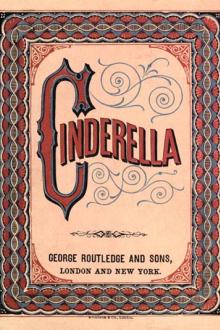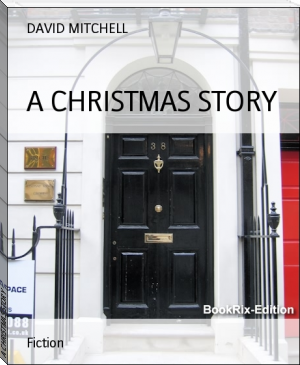Folk-lore of Shakespeare by Thomas Firminger Thiselton Dyer (well read books .TXT) 📕

"Crowdero, whom in irons bound, Thou basely threw'st into Lob's pound."
[16] Mr. Dyce considers that Lob is descriptive of the contrast between Puck's square figure and the airy shapes of the other fairies.
[17] "Deutsche Mythologie," p. 492.
[18] See Keightley's "Fairy Mythology," pp. 318, 319.
It occurs, also, in Massinger's "Duke of Milan" (iii. 2), where it means "behind the arras:"
Read free book «Folk-lore of Shakespeare by Thomas Firminger Thiselton Dyer (well read books .TXT) 📕» - read online or download for free at americanlibrarybooks.com
- Author: Thomas Firminger Thiselton Dyer
- Performer: -
Read book online «Folk-lore of Shakespeare by Thomas Firminger Thiselton Dyer (well read books .TXT) 📕». Author - Thomas Firminger Thiselton Dyer
In the sick air: let not thy sword skip one.”
“Fiery Trigon” was a term in the old judicial astrology, when the three upper planets met in a fiery sign—a phenomenon which was supposed to indicate rage and contention. It is mentioned in “2 Henry IV.” (ii. 4):
“P. Hen. Saturn and Venus this year in conjunction! what says the almanac to that?
Poins. And, look, whether the fiery Trigon, his man, be not lisping to his master’s old tables.”
Dr. Nash, in his notes to Butler’s “Hudibras,” says: “The twelve signs in astrology are divided into four trigons or triplicities, each denominated from the connatural element; so they are three fiery [signs], three airy, three watery, and three earthy:”
Fiery—Aries, Leo, Sagittarius. Airy—Gemini, Libra, Aquarius. Watery—Cancer, Scorpio, Pisces. Earthly—Taurus, Virgo, Capricornus.Thus, when the three superior planets met in Aries, Leo, or Sagittarius, they formed a fiery trigon; when in Cancer, Scorpio, and Pisces, a watery one.
Charles’s Wain was the old name for the seven bright stars of the constellation Ursa Major. The constellation was so named in honor of Charlemagne; or, according to some, it is a corruption of chorles or churl’s, i. e., rustic’s, wain. Chorl is frequently used for a countryman, in old books, from the Saxon ceorl. In “1 Henry IV.” (ii. 1), the Carrier says, “Charles’ wain is over the new chimney.”
Music of the spheres. Pythagoras was the first who suggested this notion, so beautifully expressed by Shakespeare in the “Merchant of Venice” (v. 1):
But in his motion like an angel sings,
Still quiring to the young-eyed cherubins.”
Plato says that a siren sits on each planet, who carols a most sweet song, agreeing to the motion of her own particular planet, but harmonizing with the other seven. Hence Milton, in his “Arcades,” speaks of the “celestial Sirens’ harmony, that sit upon the nine enfolded spheres.”
Stars. An astrological doctrine, which has kept its place in modern popular philosophy, asserts that mundane events are more or less influenced by the stars. That astronomers should have divided the sun’s course into imaginary signs of the Zodiac, was enough, says Mr. Tylor,[124] to originate astrological rules “that these celestial signs have an actual effect on real earthly rams, bulls, crabs, lions, virgins.” Hence we are told that a child born under the sign of the Lion will be courageous; but one born under the Crab will not go forth well in life; one born under the Waterman is likely to be drowned, and so forth. Shakespeare frequently alludes to this piece of superstition, which, it must be remembered, was carried to a ridiculous height in his day. In “Julius Cæsar” (i. 2), Cassius says:
But in ourselves, that we are underlings.”
In the following passage in “Twelfth Night” (i. 3):
“Both the knights,” says Mr. Douce (“Illustrations of Shakespeare,” p. 54), “are wrong in their astrology, according to the almanacs of the time, which make Taurus govern the neck and throat.”
Beatrice, in “Much Ado about Nothing” (ii. 1), says: “there was a star danced, and under that was I born;” Kent, in “King Lear” (iv. 3), remarks,
The stars above us, govern our conditions;”
and once more, in “Pericles” (i. 1), King Antiochus, speaking of the charming qualities of his daughter, says:
For the embracements even of Jove himself:
At whose conception, till Lucina reign’d,
Nature this dowry gave, to glad her presence,
The senate-house of planets all did sit,
To knit in her their best perfections.”[125]
Throughout the East, says Mr. Tylor,[126] “astrology even now remains a science in full esteem. The condition of mediæval Europe may still be perfectly realized by the traveller in Persia, where the Shah waits for days outside the walls of his capital till the constellations allow him to enter; and where, on the days appointed by the stars for letting blood, it literally flows in streams from the barbers’ shops in the streets. Professor Wuttke declares that there are many districts in Germany where the child’s horoscope is still regularly kept with the baptismal certificate in the family chest.” Astrology is ridiculed in a masterly manner in “King Lear” (i. 2); and Warburton suggests that if the date of the first performance of “King Lear” were well considered, “it would be found that something or other had happened at that time which gave a more than ordinary run to this deceit, as these words seem to indicate—‘I am thinking, brother, of a prediction I read this other day, what should follow these eclipses.’” Zouch,[127] speaking of Queen Mary’s reign, tells us that “Judicial astrology was much in use long after this time. Its predictions were received with reverential awe: and even men of the most enlightened understandings were inclined to believe that the conjunctions and oppositions of the planets had no little influence in the affairs of the world.”
The pretence, also, of predicting events, such as pestilence, from the aspect of the heavenly bodies—one form of medical astrology—is noticed in “Venus and Adonis:”
O, never let their crimson liveries wear!
And as they last, their verdure still endure,
To drive infection from the dangerous year!
That the star-gazers, having writ on death,
May say, the plague is banish’d by thy breath!”
Heroes were in ancient times immortalized by being placed among the stars, a custom to which Bedford refers in “1 Henry VI.” (i. 1):
Than Julius Cæsar.”
And, again, “Pericles” (v. 3) exclaims:
On a medal of Hadrian, the adopted son of Trajan and Plotina, the divinity of his parents is expressed by placing a star over their heads; and in like manner the medals of Faustina the Elder exhibit her on an eagle, her head surrounded with stars.[128]
In “2 Henry IV.” (iv. 3) a ludicrous term for the stars is, “cinders of the elements;” and in “Merchant of Venice” (v. 1) they are designated “candles of the night.”
Meteors. An elegant description of a meteor well known to sailors is given by Ariel in “The Tempest” (i. 2):
And burn in many places; on the topmast,
The yards, and bowsprit, would I flame distinctly,
Then meet and join.”
It is called, by the French and Spaniards inhabiting the coasts of the Mediterranean, St. Helme’s or St. Telme’s fire; by the Italians, the fire of St. Peter and St. Nicholas. It is also known as the fire of St. Helen, St. Herm, and St. Clare. Douce[129] tells us that whenever it appeared as a single flame it was supposed by the ancients to be Helena, the sister of Castor and Pollux, and in this state to bring ill luck, from the calamities which this lady is known to have caused in the Trojan war. When it came as a double flame it was called Castor and Pollux, and accounted a good omen. It has been described as a little blaze of fire, sometimes appearing by night on the tops of soldiers’ lances, or at sea on masts and sailyards, whirling and leaping in a moment from one place to another. According to some, it never appears but after a tempest, and is supposed to lead people to suicide by drowning. Shakespeare in all probability consulted Batman’s “Golden Books of the Leaden Goddes,” who, speaking of Castor and Pollux, says: “They were figured like two lampes or cresset lightes—one on the toppe of a maste, the other on the stemme or foreshippe.” He adds that if the first light appears in the stem or foreship and ascends upwards, it is a sign of good luck; if “either lights begin at the topmast, bowsprit,” or foreship, and descends towards the sea, it is a sign of a tempest. In taking, therefore, the latter position, Ariel had fulfilled the commands of Prospero, and raised a storm.[130] Mr. Swainson, in his “Weather-Lore” (1873, p. 193), quotes the following, which is to the same purport:
With their glittering lanterns all at play,
On the tops of the masts and the tips of the spars,
And I knew we should have foul weather that day.”
Capell, in his “School of Shakespeare” (1779, iii. 7), has pointed out a passage in Hakluyt’s “Voyages” (1598, iii. 450), which strikingly illustrates the speech of Ariel quoted above: “I do remember that in the great and boysterous storme of this foule weather, in the night, there came vpon the toppe of our maine yarde and maine maste, a certaine little light, much like unto the light of a little candle, which the Spaniards called the Cuerpo-Santo, and said it was St. Elmo, whom they take to bee the aduocate of sailers.... This light continued aboord our ship about three houres, flying from maste to maste, and from top to top; and sometimes it would be in two or three places at once.” This meteor was by some supposed to be a spirit; and by others “an exhalation of moyst vapours, that are ingendered by foul and tempestuous weather.”[131] Mr. Thoms, in his “Notelets on Shakespeare” (1865, p. 59), says that, no doubt, Shakespeare had in mind the will-o’-the-wisp.[132]
Fire-Drake, which is jocularly used in “Henry VIII.” (v. 4) for a man with a red face, was one of the popular terms for the will-o’-the-wisp,[133] and Burton, in his “Anatomy of Melancholy,” says: “Fiery spirits or devils are such as commonly work by fire-drakes, or ignes fatui, which lead men often in flumina et præcipitia.” In Bullokar’s “English Expositor” (1616), we have a quaint account of this phenomenon: “Fire-drake; a fire sometimes seen flying in the night like a dragon. Common people think it a spirit that keepeth some treasure hid, but philosophers affirme it to be a great unequal exhalation inflamed betweene two clouds, the one hot, the other cold, which is the reason that it also smoketh, the middle part whereof, according to the proportion of the hot cloud being greater than the rest, maketh it seem like a bellie, and both ends like unto a head and taill.”[134] White, however, in his “Peripateticall Institutions” (p. 156), calls the fiery-dragon or fire-drake, “a weaker kind of lightning. Its livid colors, and its falling without noise and slowly, demonstrate a great mixture of watery exhalation in it.... ’Tis sufficient for its shape, that it has some resemblance of a dragon, not the expresse figure.”
Among other allusions to the will-o’-the-wisp by Shakespeare, Mr. Hunter[135] notices one in “King Lear” (iii. 4), where Gloster’s torch being seen in the distance, the fool says, “Look, here comes a walking fire.” Whereupon Edgar replies, “This is the foul fiend, Flibbertigibbet; he begins at curfew, and walks till the first cock.” “From which,” observes Mr. Hunter, “Flibbertigibbet seems to be a name for the will-o’-the-wisp. Hence the propriety of ‘He begins at curfew, and walks till the crowing of the cock,’ that is, is seen





Comments (0)